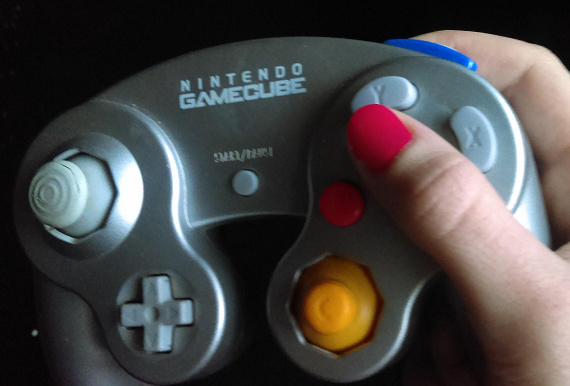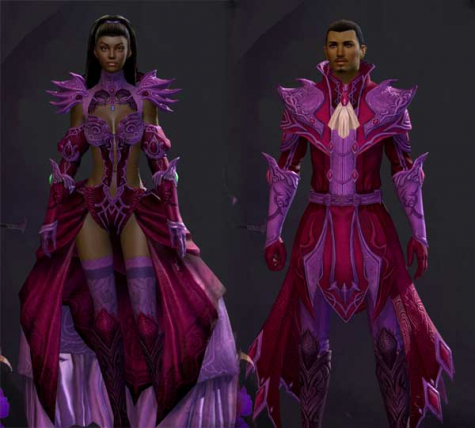Of Girls And Games

Should an image like this be considered out of the ordinary?
It’s an exciting time to be a gamer: We’re living in a golden age of technology, E-sports (professional competitive gaming) are quickly gaining fame, but most importantly, the female demographic is growing. This is more than just a pleasant statistic–it’s a major shift that’s changing the gaming industry.
But any large change is bound to result in some clashes. As more and more conversations begin to center around how women relate to video games, controversies are born. To understand why a gender’s role in this media has become so fiercely debated, we need to look back into a bit of video game history.
In recent years, the gaming community grappled with an intense discussion: should video games be considered art? Though they have already been granted some creative protections by the Supreme Court, there is still long-standing controversy on the topic. However, gamers themselves seem to be in unanimous agreement that video games are an unparalleled form of expression and storytelling.
But this seemingly synchronized sentiment split when the critical eyes of art connoisseurs turned their focus toward the digital world. Video games were soon viewed by many as a sociopolitical landscape. Every character, frame, and sound could be analyzed and called to attention. To some, this was just an over complication of what should have been a fun pastime.
So was this a problem? It depends who you ask — some see this analysis as a wake-up call to a highly influential industry, while others believe the call-outs for unrealistic or offensive representations of races and genders is just a liberal push for political correctness. The debate gets especially heated around the portrayal of women.
In the last year, the internet exploded over a series of events that led to the creation of ‘Gamergate.’ Conflicting viewpoints turned into an all-out brawl when a media critic named Anita Sarkeesian began a kickstarter to fund an internet series that would highlight negative tropes and roles that women in popular games seem to be trapped in.
The reaction to Sarkeesian is one of the most blatant and terrifying instances of misogyny in the gaming community that the world has ever seen. Sarkeesian has suffered through thousands of twisted threats targeting her and her family.
“There was a threat that someone emailed to the school saying that they would commit the biggest school shooting–a massacre– if I was allowed to speak,” said Sarkeesian on The Colbert Report.
There’s no easy way to take on an entire industry. Sarkeesian and many others still face attacks and threats for speaking up about the inequality they see on what should be a modern platform. “I think women are perceived as threatening because we’re asking for games to be more inclusive,” said Sarkeesian. “We’re asking for games to acknowledge that we exist and that we love games.”

A series of official Grand Theft Auto V character portraits that perfectly illustrate the game’s problem.
The Grand Theft Auto series is perhaps one of the worst offenders. In the latest game, Grand Theft Auto V, there are not only no playable female characters, but the females that are shown in the game are either shallow side characters, strippers, or prostitutes. Though it can be argued that GTA is a satirical look at the extents of wretchedness games can go to, many players miss the point completely and see no problem in playing out a variety of harassment situations.
Blog writer Feministborgia wrote, “The trouble is, all of the female characters in this game are little more than sexist stereotypes of womanhood, or just figures of derision. We have the career obsessed, emotionally stunted woman, we have the harridan oppressing her poor henpecked boyfriend, and we have the whores. And boy do we have a lot of whores in this game.”
The design of female characters — specifically their clothing — is often the biggest concern for those calling for better representation in video games. Women are still used as decorations in many titles. Even Nintendo’s newest installment of the critically acclaimed Fire Emblem series fails to avoid the pitfall of pandering to male viewers via unrealistically buxom female characters.
“Literally every Dead or Alive character – the characters are just there for fan service,” said senior Lu’cinda Pena. “ A lot of the female characters have become very shallow in their personalities. Dead or Alive is known for their unrealistic engines for making breasts bouncy and very big.”
Though the unrealistic body images span both genders, it’s often been pointed out that mainly female characters are designed for the “male gaze” — a term used to describe the way women are sexualized in the media to cater to straight male viewers. Perhaps the best examples of this are the infamous chainmail bikinis and skimpy armor outfits given to female characters in fantasy series and MMOs.
“It’s kind of like, ‘what is the point of that armor? It doesn’t protect you at all,’” said Pena.

Same class, different outfit.
Anyone with even the slightest amount of knowledge about how armor works can easily challenge designs such as these. A lack of armor is obviously dangerous, but armor designs that emphasize breasts can be just as bad.
These kind of outfits only contribute to some of the dangerous mentalities female gamers run into. “It’s especially prevalent in MMOs,” said James Parker, who currently teaches the Narratives and Literacy in Gaming class. “If you play as a female character, male gamers will often try to give you extra help or try to flirt with you. Then if you reveal that you’re not actually a woman, they act as if you were purposefully deceiving them.”
Representations of different groups is something Apple Valley’s new Narratives and Literacy in Gaming class tackles in its second week. Being exposed to the issues in the modern world of gaming and understanding how they affect their audience is the first step toward a better future for the industry.
“It has shown me that in gaming, any gender can be over sexualized,” said Felipe Escudero, a senior currently enrolled in the course. “Even if you don’t notice it – some games you can play through without noticing it, until someone brings it up and you realize ‘holy crap I’ve been playing this game for who knows how long, and now there’s this sort of blemish on it.’”
It’s obvious to see why today many gamers of all genders still feel uncomfortable with portrayals of women in games. The progress towards better characterization and less shameless pandering is neither simple nor without its challenges. But things are slowly getting better, and the growing presence of women in gaming spaces is a sure sign of future equality.







